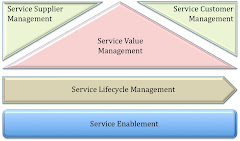Assessing and achieving alignment between an organization's strategies and its IT/business functions has long been recognized as a critically important question. This paper reports on a project that seeks to overturn established management orthodoxy by establising that strategies can be adequately modeled using conceptual modeling nota- tions and that methodological and tool support can be provided for the task of assessing and achieving alignment between the strategies of an organization and its service offerings. A key element of this enterprise has been the design of SML - the Strategy Modeling Language. This paper presents an interim report from this project that describes how a nota- tion inspired by i* has been used to obtain the diagrammatic modeling component of SML, and how i*-like notions have been used to represent strategy decomposition (required to be able to refine strategies to a level where there is an onotlogical match between the languages used to de- scribe strategies and services). We also comment on how i*-like notions would play a greater role in this project, as a complete model of the en- terprise context is brought to bear on the alignment exercise. We provide a brief illustration, and a description of the toolkit implemented on the Eclipse platform.
See here for more information.



